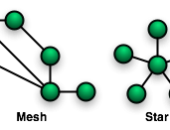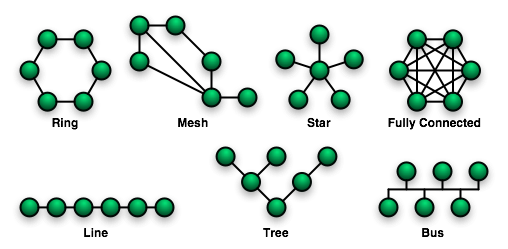If you had to design a central clearinghouse for transactions in financial markets, what size of guarantees should be offered? And what percentage fees should be charged?
“The central clearing modifies the market,” said Andreea Minca, “because the old network structure [of one-to-one] is changing to a new ‘star’ structure.” Minca is Assistant Professor at the School of Operations Research and Information Engineering at Cornell University and was the sole presenter at the December 6, 2016, webinar on systemic risk and central clearing design to members of the Global Association of Risk Professionals (GARP).
Under new US legislation, all over-the-counter (OTC) trades must be mediated by a central clearing counterparty (CCP). Minca’s goal is to figure out the best design through applying the latest principles of operational risk design.
“The central node has risk management capability and risk-absorbing capital with many layers of protection,” she explained. “We are really talking about how big these layers of protection should be.”
“Also, we want to consider incentives of all parties,” such as banks, to join the CCP.
Recent work that Minca co-authored with Amini and Filipovic[1] examined these questions in the case of credit default swaps (CDS). They modeled the market from an ex post perspective (after a credit event has occurred) and an ex ante perspective (before the event).
The model implemented rules around two types of guaranteed funds: the margin fund, for which one or both parties to a CDS contract must post collateral; and the “hybrid” fund, which is netted against liabilities.
Minca gave a simple example of a network fixed-point problem. Bank A owes $50 million to Bank B, but can only pay $40 million. Say this $40 million consists of $20 million cash and $20 million receivables from Bank D. However, Bank B owes Bank D. Therefore, Bank D cannot pay Bank A … due to Bank B’s problem in getting Bank A to pay. This is how counterparty risk can mutate into systemic risk and bring down the whole network.
“You cannot count on receiving what you are actually due,” Minca said. “What you actually receive depends on the network clearing mechanism. We see the effects of how we clear the liabilities on the amount of asset liquidations.” The forced liquidation of external assets lowers the aggregate surplus.
Now, consider the star-shaped CCP design.
As part of its design, the CCP would charge a volume-based fee for the transactions that funnel through it. Also as part of the design, the capital structure of the CCP would have external equity capital, plus a guarantee fund received from each bank at the time of set-up.
When a credit event occurs, the losses from one bank might eat up its nominal guarantee fund—and then start to eat into other guarantee funds.
Note: the CCP introduces tail risk and, if not properly set up, it could increase systemic risk.
Minca showed that, given the choice of appropriate parameters, the CCP design would have less systemic risk. In the ex post case, “The CCP improved the aggregate surplus due to lower liquidation costs,” she noted. It reduced shortfall losses and bankruptcy costs.
In the ex ante case, the simulation study they carried out showed the acceptable ranges of CCP equity, fee percentages, and guarantee fund policies.
Last, Minca concluded that the hybrid guarantee fund design was superior to a pure margin fund. Although it gave similar systemic risk, she found it “greatly improves banks’ incentives to join the CCP.” ª
[1] Amini, Hamed and Filipović, Damir and Minca, Andreea, Systemic Risk and Central Clearing Counterparty Design (September 3, 2015). Swiss Finance Institute Research Paper No. 13-34. Available at SSRN: https://ssrn.com/abstract=2275376 or http://dx.doi.org/10.2139/ssrn.2275376
The figure is from the Wikipedia entry for Network Topologies.


